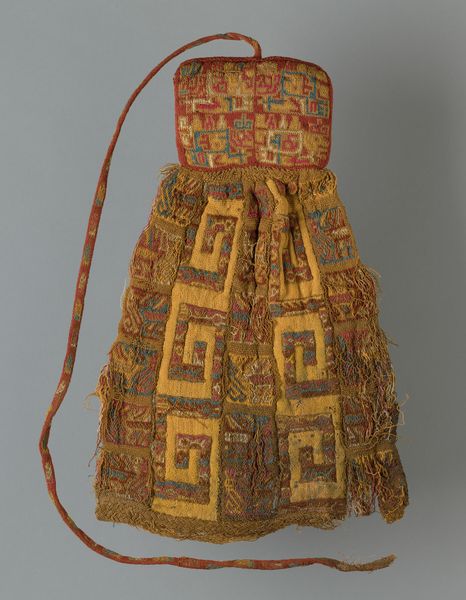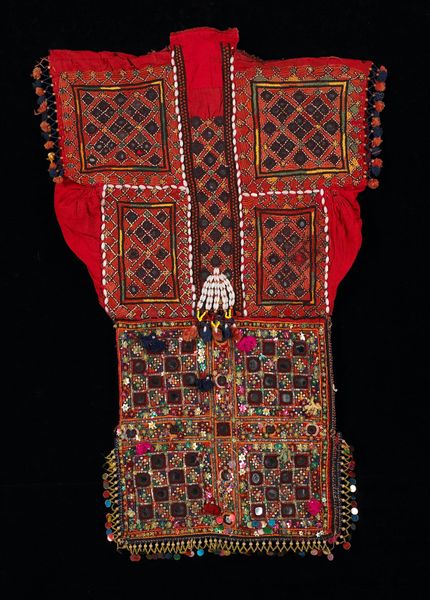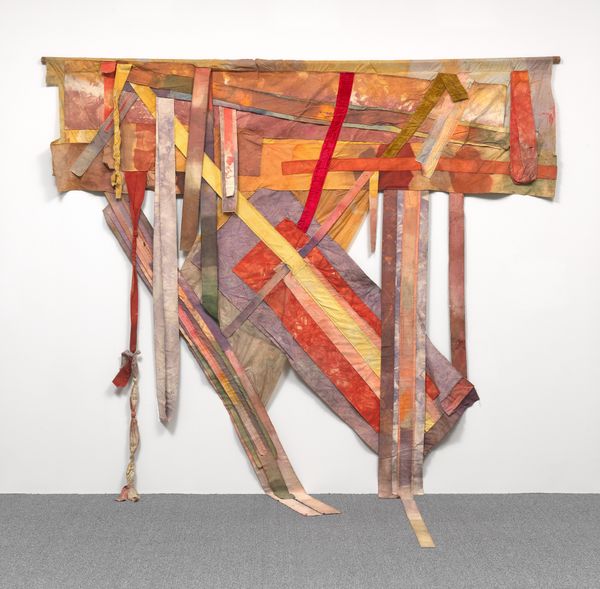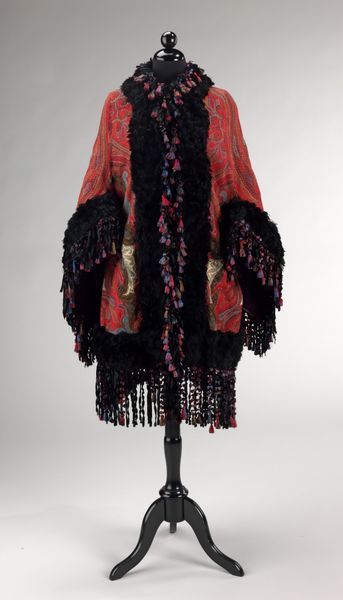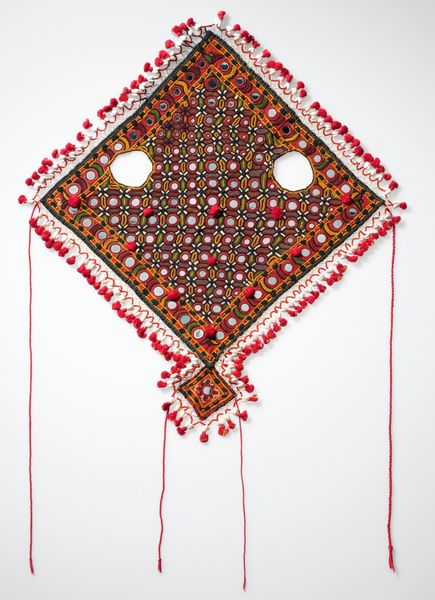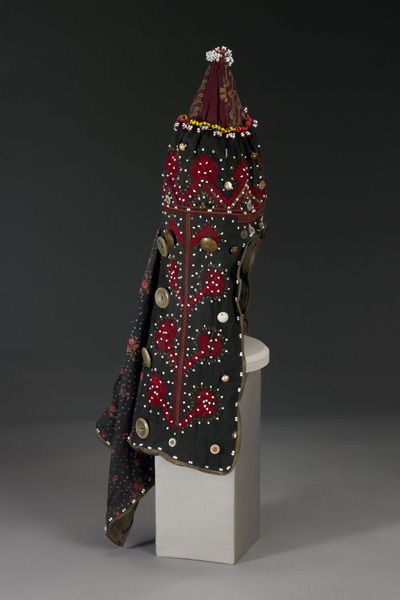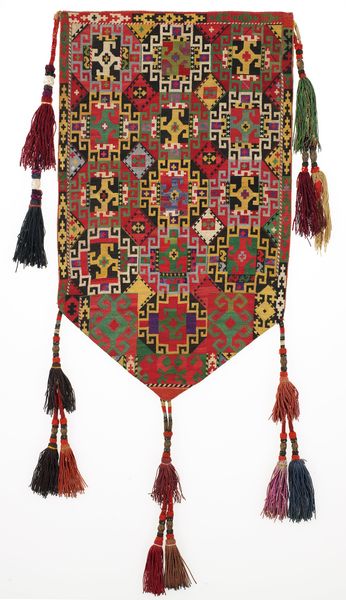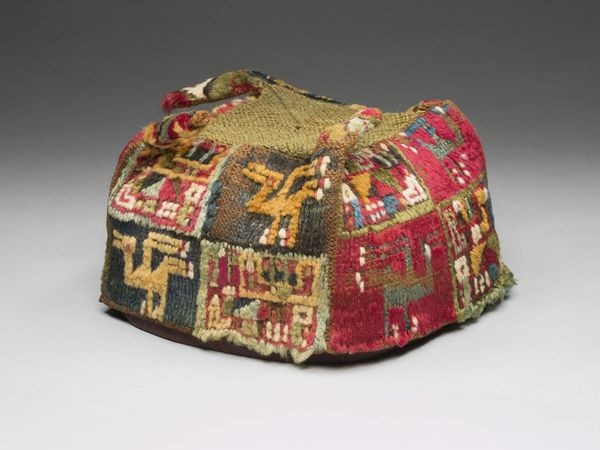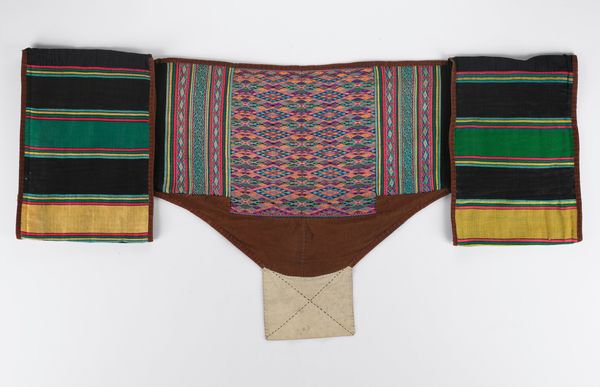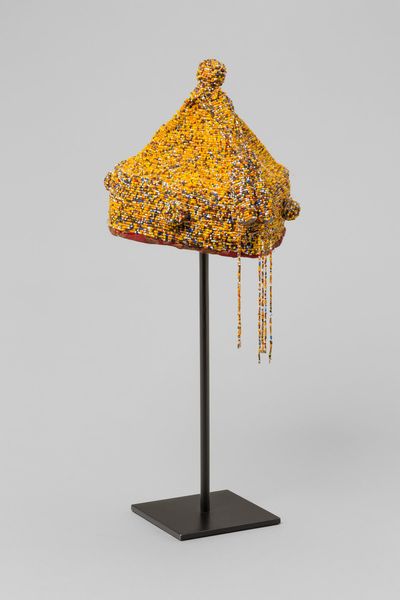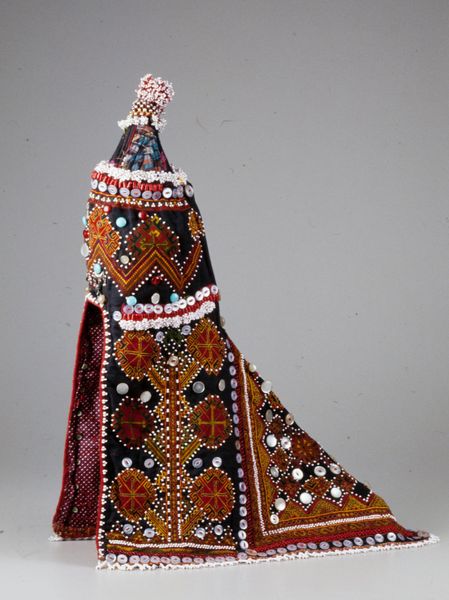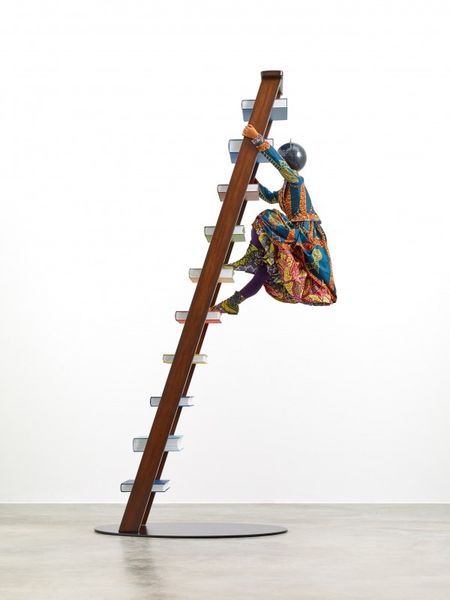
mixed-media, fibre-art, textile
#
african-art
#
mixed-media
#
fibre-art
#
textile
#
folk art
#
traditional architecture
#
folk-art
#
yoruba-art
#
decorative-art
#
decorative art
Dimensions: 67 1/2 x 65 1/2 x 5 in. (171.45 x 166.37 x 12.7 cm)
Copyright: No Known Copyright
Editor: Right this way. Here we have an "Egungun ceremonial outfit" created by a Yoruba artist sometime between 1930 and 1950. The piece uses mixed media including a variety of textiles and fibers. The density of patterns and textures is striking, even overwhelming. How might we understand this work through the lens of its materiality? Curator: What is particularly interesting here is the re-use, and therefore inherent value, of what may seem like disparate and humble materials: the textiles, the embellishments. Rather than viewing this as simply "decorative," let's consider the labor involved. Each piece is carefully selected, placed, and sewn. This represents an immense amount of human capital expended to honor ancestors. Editor: So you're suggesting the act of making is almost as important as the finished product itself? The community benefits by showing devotion and respect to ancestors, thereby reinforcing social ties? Curator: Precisely! The Egungun outfit is not just a beautiful object; it's the product of a whole network of makers and users, deeply embedded in the social and economic fabric of the Yoruba people. Consider how this elaborate expenditure stands in contrast to, yet reinforces, daily material conditions. It is literally a wealth of community, worn. Editor: It's a powerful idea, viewing this artwork less as a static piece and more as a dynamic representation of production, labor, and social cohesion. Curator: Right. And how the consumption of textiles in daily life directly feeds into the raw material used to create these pieces. The constant reincarnation of resources reflects ancestral presence. Editor: That makes me think about value in a new way. Curator: Indeed, thinking about the process helps reveal greater significance and invites a wider perspective.
Comments
minneapolisinstituteofart almost 2 years ago
⋮
Made of layer upon layer of narrow cloth panels, the Egungun costume entirely covers the dancer, who peers out through a knotted fabric in front. The most prominent color of these masks is red, associated with healing and salvation. The annual Egungun masquerade honors the Yoruba ancestors, and the masked dancer becomes the ancestor, spinning and twirling to send the colorful panels flying out in all directions, giving “breezes of blessings.”
Join the conversation
Join millions of artists and users on Artera today and experience the ultimate creative platform.

